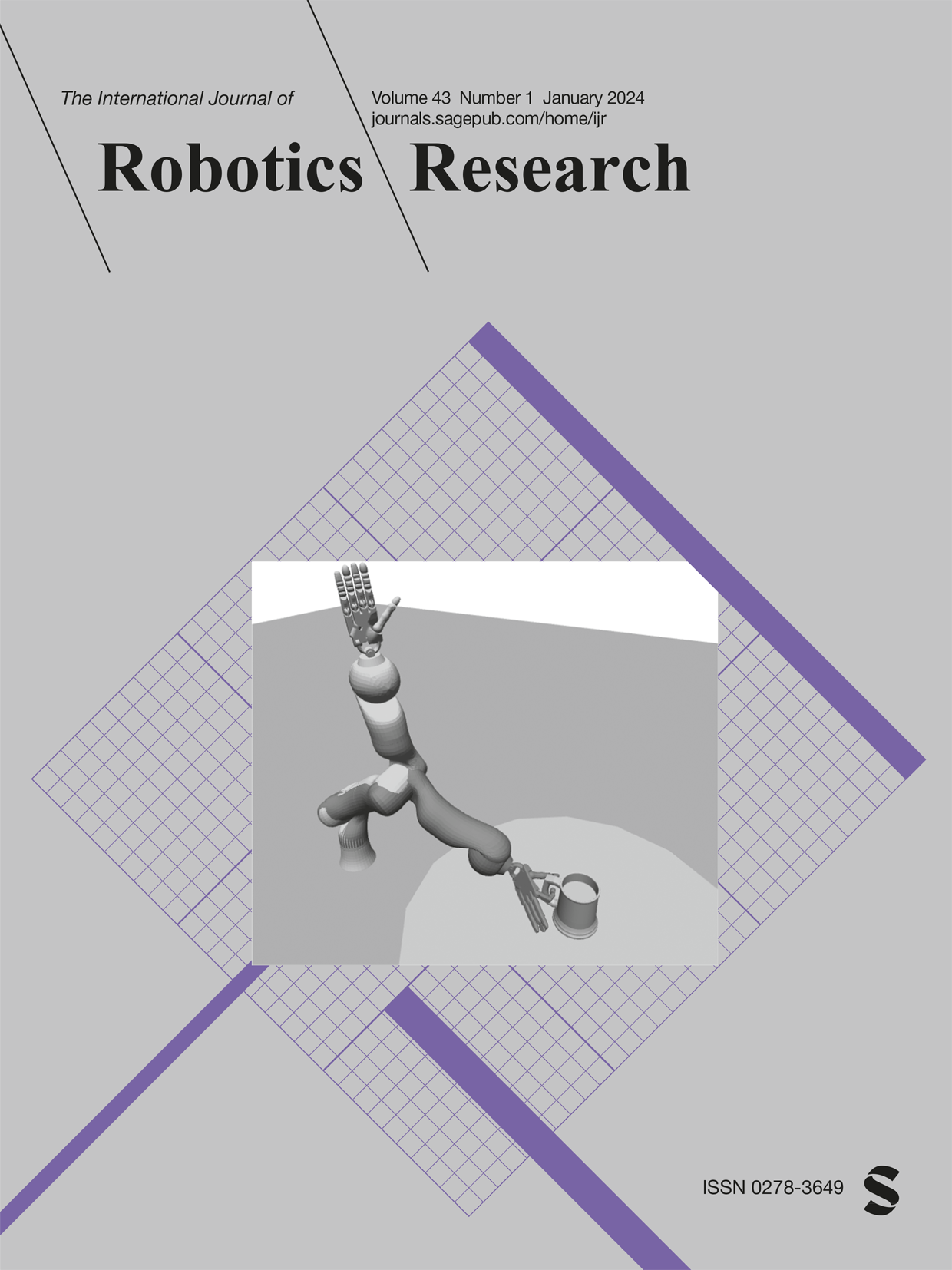欠驱动车辆六自由度装置和执行器模型的稳定零空间自适应参数辨识:理论与实验评估
IF 5
1区 计算机科学
Q1 ROBOTICS
引用次数: 0
摘要
基于模型的导航、控制和故障检测方法,利用精确的车辆动态非线性模型,将为此类车辆提供更精确的控制和导航,确保自主性,以及更复杂的任务。本文报道了基于有限维牛顿-欧拉方程的六自由度欠驱动水下航行器的装置和执行器模型参数估计问题的理论和实验结果。本文报道了第一个同时识别六自由度植物模型参数(如质量、附加质量、水动力阻力和浮力等参数)和控制执行器参数(控制面模型和推进器模型)的理论方法和实验验证。大多数先前报道的参数识别研究假设控制执行器参数是先验已知的。此外,本文还首次证明了该类车辆在持续激励条件下参数估计对真参数集的收敛性。所报道的自适应识别(AID)算法不需要测量六自由度车辆加速度,而传统的参数估计方法(如最小二乘法)需要测量六自由度车辆加速度。此外,本文提出的AID算法适用于任意开环或闭环控制律。我们报告了L3 OceanServer Iver3自主水下航行器的工厂模型和控制执行器参数识别的仿真和实验结果。我们认为,这种对援助的一般做法可以扩大到适用于其他种类的机器和其他种类的海洋、陆地、空中和空间交通工具。本文章由计算机程序翻译,如有差异,请以英文原文为准。
Stable nullspace adaptive parameter identification of 6 degree-of-freedom plant and actuator models for underactuated vehicles: Theory and experimental evaluation
Model-based approaches to navigation, control, and fault detection that utilize precise nonlinear models of vehicle plant dynamics will enable more accurate control and navigation, assured autonomy, and more complex missions for such vehicles. This paper reports novel theoretical and experimental results addressing the problem of parameter estimation of plant and actuator models for underactuated underwater vehicles operating in 6 degrees-of-freedom (DOF) whose dynamics are modeled by finite-dimensional Newton-Euler equations. This paper reports the first theoretical approach and experimental validation to identify simultaneously plant-model parameters (parameters such as mass, added mass, hydrodynamic drag, and buoyancy) and control-actuator parameters (control-surface models and thruster models) in 6-DOF. Most previously reported studies on parameter identification assume that the control-actuator parameters are known a priori. Moreover, this paper reports the first proof of convergence of the parameter estimates to the true set of parameters for this class of vehicles under a persistence of excitation condition. The reported adaptive identification (AID) algorithm does not require instrumentation of 6-DOF vehicle acceleration, which is required by conventional approaches to parameter estimation such as least squares. Additionally, the reported AID algorithm is applicable under any arbitrary open-loop or closed-loop control law. We report simulation and experimental results for identifying the plant-model and control-actuator parameters for an L3 OceanServer Iver3 autonomous underwater vehicle. We believe this general approach to AID could be extended to apply to other classes of machines and other classes of marine, land, aerial, and space vehicles.
求助全文
通过发布文献求助,成功后即可免费获取论文全文。
去求助
来源期刊
CiteScore
22.20
自引率
0.00%
发文量
34
审稿时长
6-12 weeks
期刊介绍:
The International Journal of Robotics Research (IJRR) has been a leading peer-reviewed publication in the field for over two decades. It holds the distinction of being the first scholarly journal dedicated to robotics research.
IJRR presents cutting-edge and thought-provoking original research papers, articles, and reviews that delve into groundbreaking trends, technical advancements, and theoretical developments in robotics. Renowned scholars and practitioners contribute to its content, offering their expertise and insights. This journal covers a wide range of topics, going beyond narrow technical advancements to encompass various aspects of robotics.
The primary aim of IJRR is to publish work that has lasting value for the scientific and technological advancement of the field. Only original, robust, and practical research that can serve as a foundation for further progress is considered for publication. The focus is on producing content that will remain valuable and relevant over time.
In summary, IJRR stands as a prestigious publication that drives innovation and knowledge in robotics research.

 求助内容:
求助内容: 应助结果提醒方式:
应助结果提醒方式:


